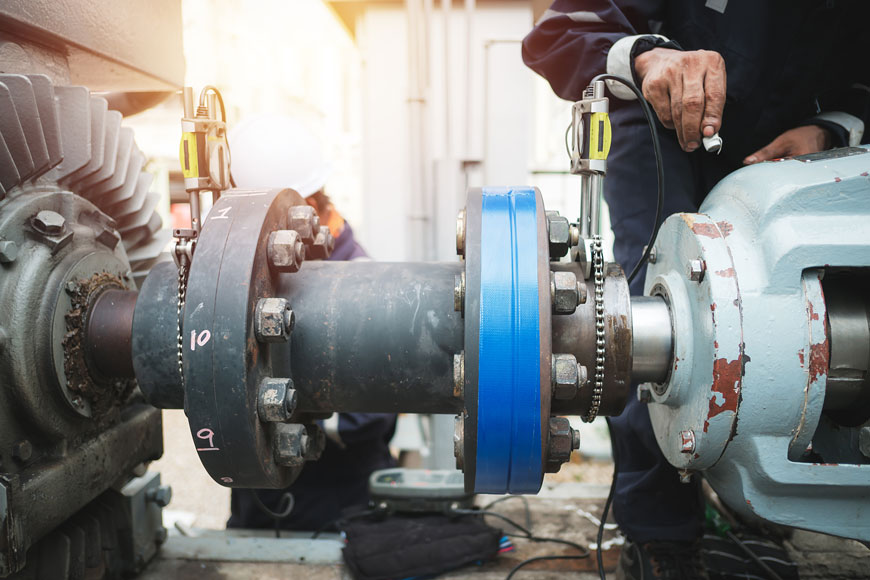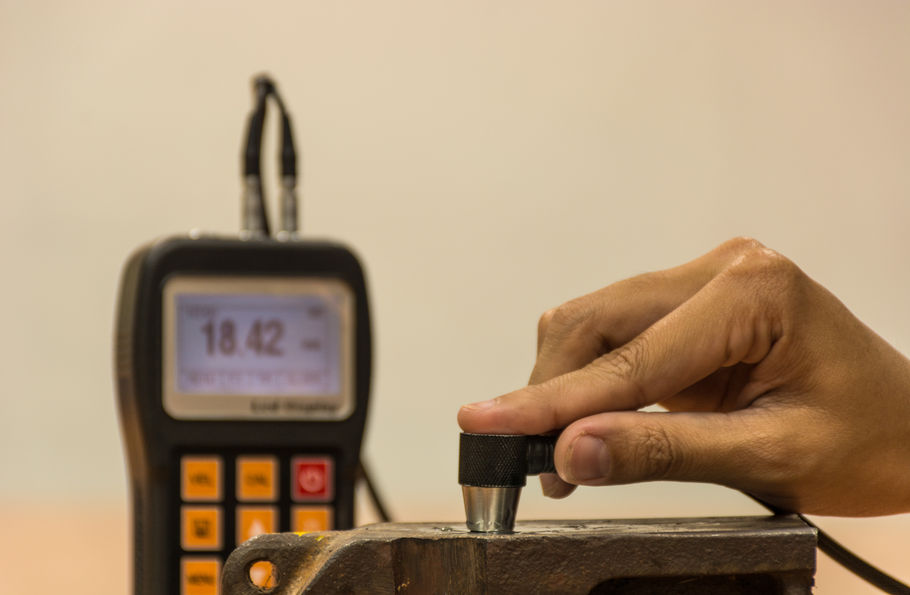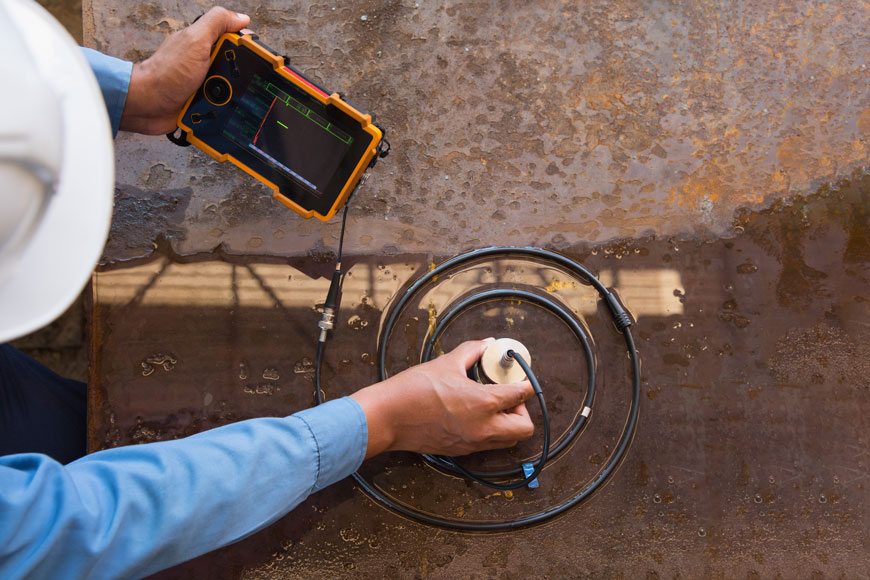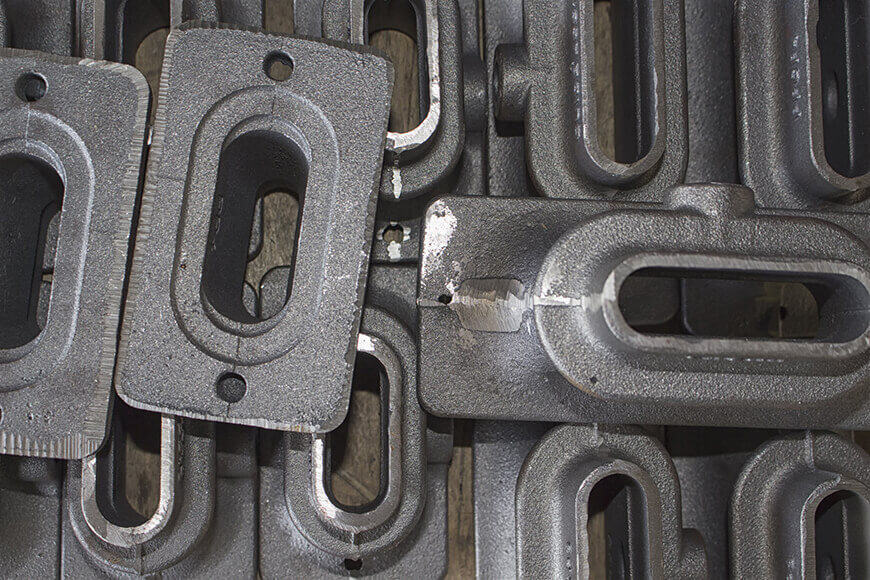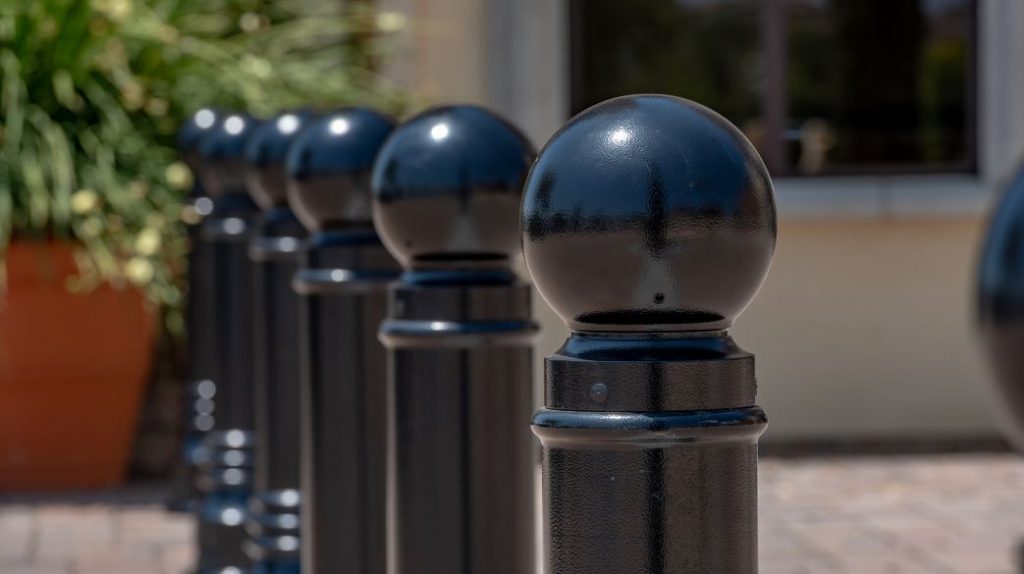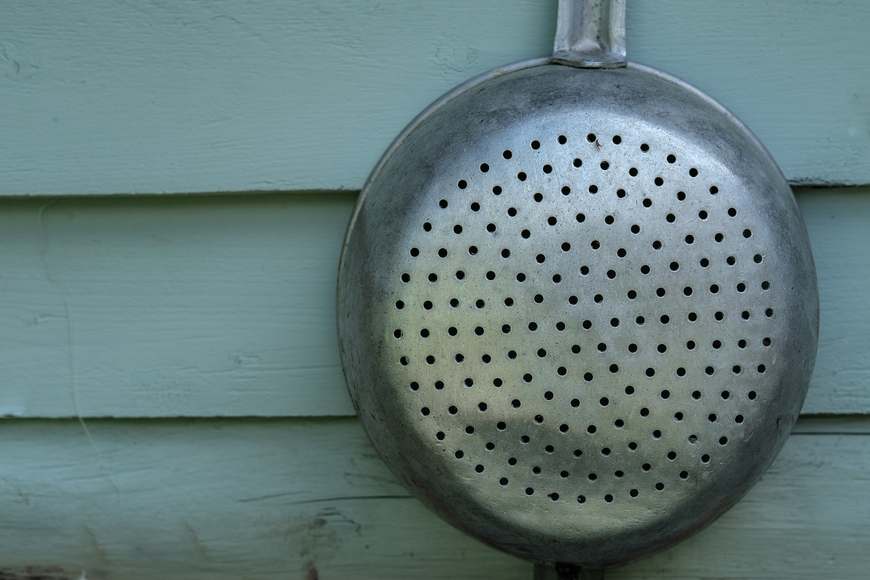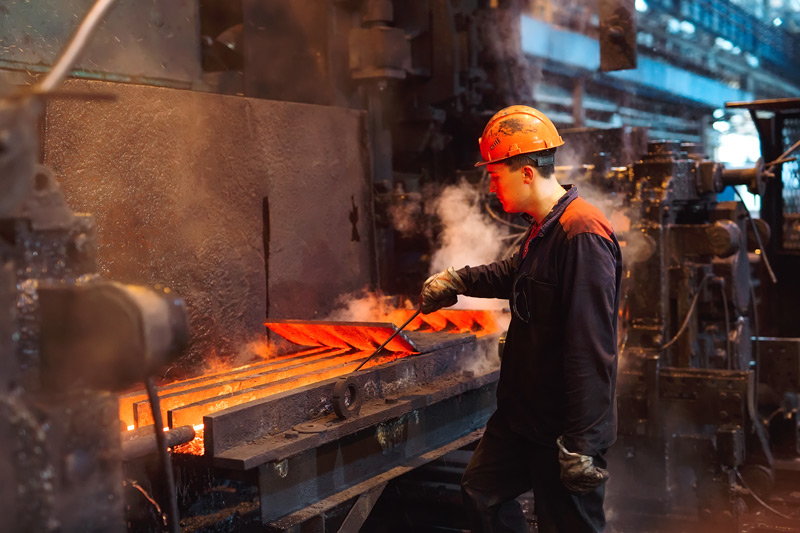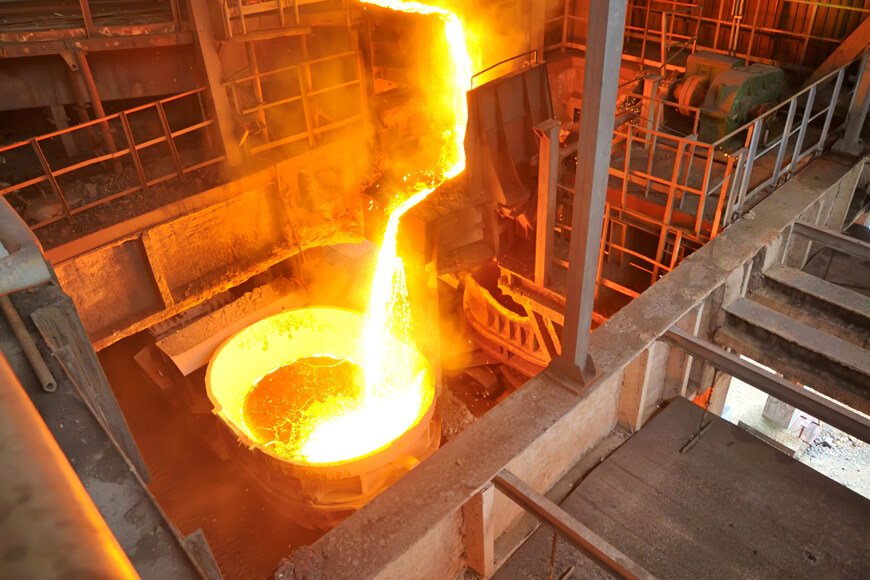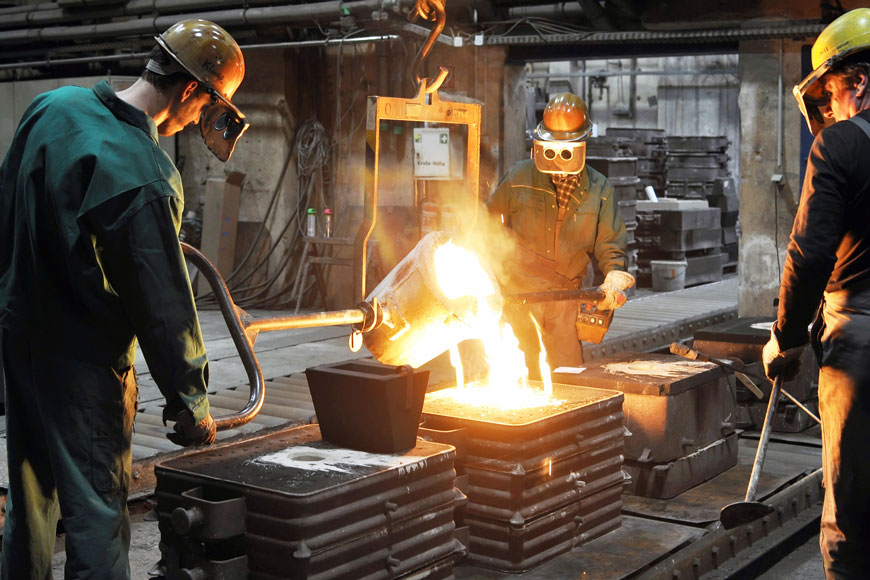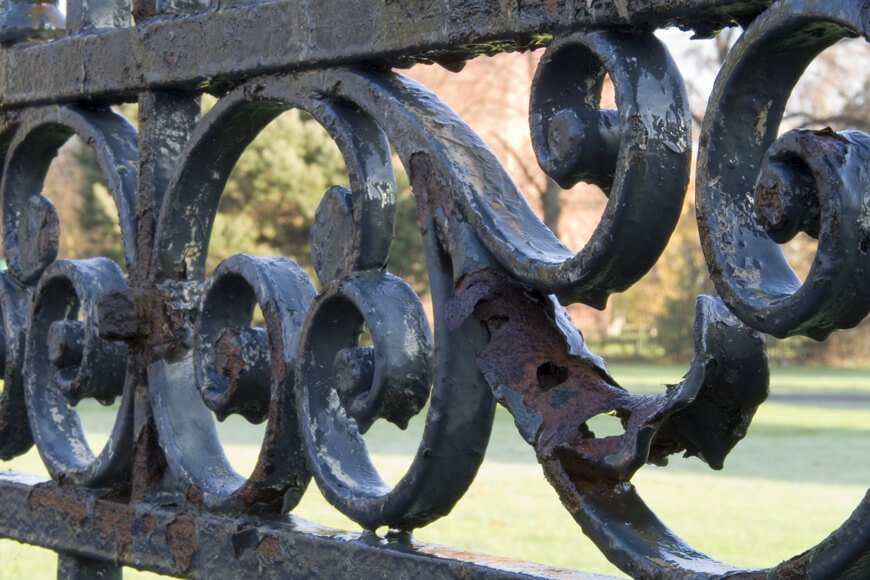9 important considerations to ensure the success of your custom metal casting projects
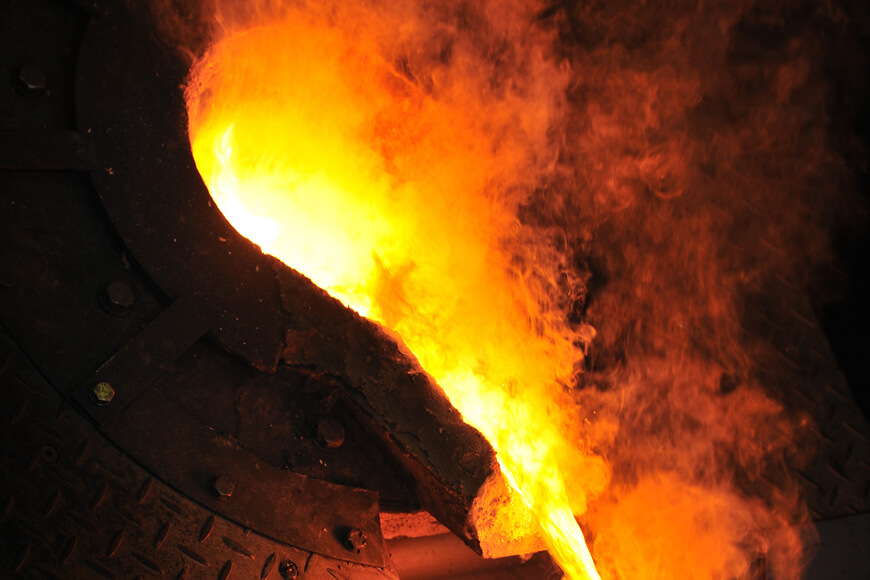
Metal casting is a process that produces shapes (castings) by filling voids in molds with liquid metal. Cast metal products offer exceptional strength and durability, making them useful for heavy machine applications in industries related to farming, automobiles, railroads, home appliances, building architecture, ship building, oil and gas extraction, water processing, forestry and mining—to name a few.
Qualifying a supplier foundry and ordering metal castings can be a time-consuming ordeal, but it doesn’t have to be. Costly blunders can be avoided by understanding the quotation and casting process. Clear and thorough communication with the supplier foundry will result in a well-designed and economical final product.
Requesting a quote
The purpose of requesting a quotation for a casting is to establish the optimal balance of purchased casting cost, quality, and delivery time. While it may be tempting to automatically select the lowest price quoted, doing so can lead to delayed delivery or a lower quality casting—both of which can be more expensive in the long term.
A savvy customer must weigh all the provisions of the quotation received, including tooling requirements, tolerances, and finish allowances, as well as any exceptions taken to drawings, specifications, and processing requirements. Other factors, such as reduced machine work, improved delivery terms, and supplier foundry experience and reliability, are particularly important to determine the actual cost versus value of the casting.
There are at least nine important considerations to be addressed when requesting metal casting pricing from a supplier foundry:
- Preliminary casting design
- Quantity
- Specifications
- Soundness
- Testing and inspection
- Weight
- Patterns
- Machining
- Production and delivery schedules
1. Preliminary casting design
A cast metal part should be designed to take full advantage of the casting process. For efficient and cost-sensitive production, casting design should select for the simplest production methods that will result in the desired physical properties, net shape demands, and cosmetic appearance.
Drawings detailing the exact dimensions of the part required should be included with any request for quote.
There are several key components of design where an understanding of foundry processes and/or communications with supplier foundries will help determine the most cost-effective designs from a foundry’s point of view.
Minimum section thickness
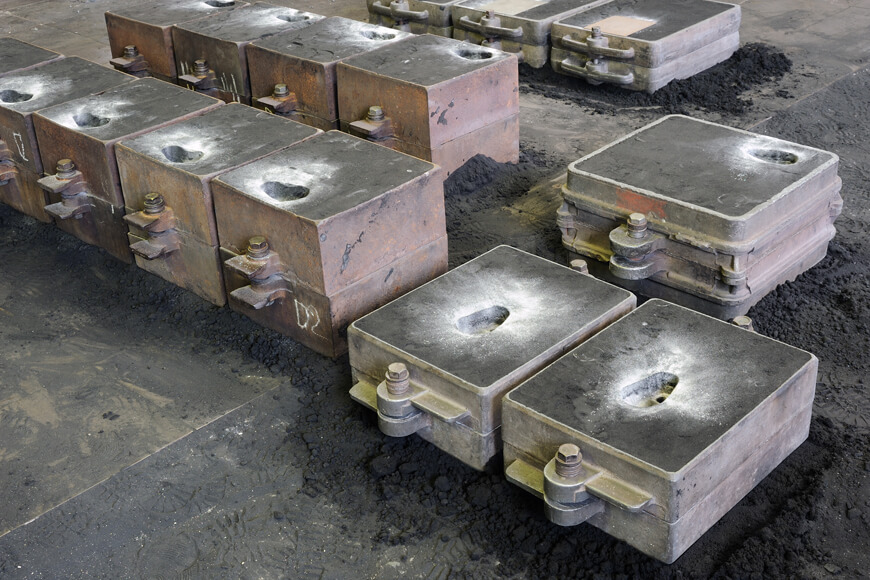
Every casting has a minimum thickness determined by its strength and rigidity. Designs thinner than the specifications may make the project un-castable. To be successful, a casting’s design must allow liquefied metal to fill the mold in the thinner sections.
Liquefied (molten) metal cools at an exceptionally fast rate. It may cool too quickly to enter thin sections that are far away from the mold’s gate. As a rule, designs should not have areas that are thinner than 0.25 in (6 mm) when conventional processes are used. Investment casting allows for a greater level of freedom and wall thickness can drop to as low as to 0.030 in (0.76 mm).
Draft and core
The term “draft” refers to the taper on the vertical faces of a pattern. A draft is necessary to extract the pattern from the mold without disturbing the mold walls. Ignoring the limitations of these angles will cause the mold to tear when it is removed from the casting.
Several factors will affect how much draft is required for each casting: the manufacturing process, the casting size, and whether the molding is performed by hand or machine will all change the required degree of draft. Less draft is required for machine-molded castings. Castings produced with green sand molds, however, will require more draft than usual. The general rule of thumb is to allow 3/16 in of draft per ft (approximately 1.5 degrees).
A core is a hollow space created within a casting by a piece of molding sand. Cores are necessary when the spaces or cavities cannot be created with the pattern alone. The use of cores may eliminate the need for draft, however their use should be limited as they add to the cost of the casting.
Three factors affect the minimum diameter of a core that can be placed in a casting:
- The thickness or depth of the area in which the core will be placed,
- How long the core is, and
- The casting method the supplier foundry will employ.
Parting line
Parting in one plane facilitates the production of patterns as well as the production of the mold. Patterns with straight parting lines (with parting lines in one plane) can be produced more easily and at a lower cost than those with irregular parting lines. Casting shapes that are symmetrical readily suggest the parting line. Such casting design simplifies molding and coring, and should be used wherever possible. They should always be made as “split patterns” (separate cope and drag) which require a minimum of handwork in the mold, improve casting finish, and reduce costs.
Cores
A core is a separate piece (often made from molding sand) placed inside the mold to create openings and cavities which cannot be made by the pattern alone. To reduce the final cost of the casting, every attempt should be made by the design to eliminate or reduce the number of cores needed.
The minimum diameter of a core that can be successfully used in steel castings is dependent upon three factors:
The thickness of the metal section surrounding the core,
The length of the core, and
The special precautions and procedures used by the supplier foundry.
The adverse thermal conditions to which the core is subjected increase in severity as the metal thickness surrounding the core increases and the core diameter decreases. These increasing amounts of heat from the heavy section must be dissipated through the core. As the severity of the thermal conditions increases, the cleaning of the castings and core removal becomes much more difficult and expensive.
The thickness of the metal section surrounding the core, and the length of the core, both affect the bending stresses induced in the core by buoyancy forces and, therefore, the ability of the supplier foundry to obtain the tolerances required. If the size of the core is large enough, rods can often be used to strengthen the core. Naturally, as the metal thickness and the core length increase, the amount of reinforcement required to resist the bending stresses also increases. Therefore, the minimum diameter core must also increase to accommodate the extra reinforcing.
The cost of removing cores from casting cavities can become prohibitive when the areas to be cleaned are inaccessible. The casting design should provide for openings sufficiently large to permit the removal of the core.
Less accessible areas in the casting make it more difficult to remove cores and affect the economic feasibility of the projects. Castings should always be designed with openings large enough to allow for the removal of cores.
Castings are normally shipped with un-machined, as-cast surfaces unless otherwise specified. To take advantage of the casting process, the supplier foundry should know which surfaces are eventually to be machined (see “8. Machining” below for more details) and where datum points are located. The acceptable dimensional tolerances must be indicated when a drawing is provided. Tolerances are normally agreed upon between the supplier foundry and customer.
Close cooperation between the customer’s design engineers and the supplier foundry is essential to optimize the casting design. All casting designs should be checked by a foundry professional before production to determine the feasibility of the casting project.
2. Quantity
The number of castings to be produced, or the length of run, should be clearly stated. Order quantity will have a significant impact on price, with longer runs corresponding to a lower cost per casting.
The quantity of parts required is not a minor consideration; not only will the project consumption of the part determine the types of tooling required, but it will also define the capability of specific foundries to meet the production volume needs.
Many foundries specialize in the production of short-term, short-run “jobbing” work, while others focus on high volume production. Defining your needs early on will help ensure you are communicating with the correct production facilities.
3. Specifications
Industry standard specifications provide the casting customer with the tools necessary to establish criteria for almost any casting application. These specifications do not preclude special requirements that the customer’s technical staff members may require. Variations from standard specifications can result in misunderstandings, higher costs, and disqualification of potential supplier foundries. If an exception is taken to a provision in the main body of a specification requirement (as opposed to taking exception to a supplemental requirement of a specification), the resulting casting cannot be held to compliance with those specifications.
The exact metal alloy to be cast should be specified using an internationally recognized standard such as ASTM. Castings are produced from two categories of metals:ferrous (iron based) and non-ferrous (not iron-based).
Cast steel is the most common ferrous casting metal, however, other metals can be used depending on desired physical properties, including stainless steel, malleable iron, and ductile iron. Aluminum and copper are the most common non-ferrous metals used in casting.
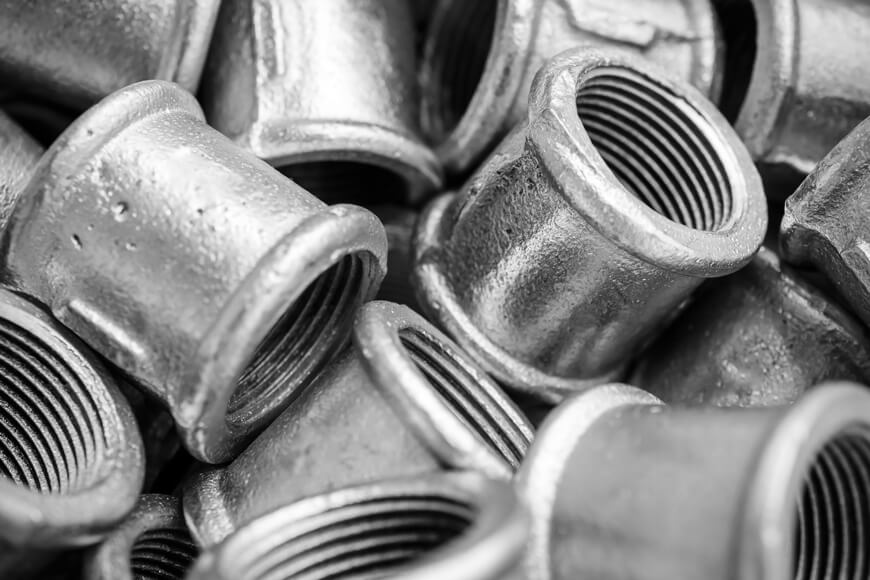
Mechanical properties may be verified by the use of test bars, either cast separately or attached to the castings. The mechanical properties obtained represent the quality of the metal, but do not necessarily represent the properties of the castings themselves, which are affected by solidification conditions and rate of cooling during heat treatment—which in turn are influenced by casting thickness, size, and shape. The hardening ability of some grades can restrict the maximum size at which the required mechanical properties are obtainable.
Heat treating
Heat treating is used to standardize, homogenize, and enhance the properties of specific alloys. For many alloys, heat treating is a routine process employed to ensure minimum physical properties specified are attained in the final cast products. Temperature-controlling devices and even advanced temperature recording equipment are routinely found on modern heat treatment furnaces to ensure consistency and quality of heat treating steps.
In some cases, specialized heat treating (such as flame hardening, case hardening, etc.) can be specified as an additional process to be conducted by the supplier foundry.
4. Soundness
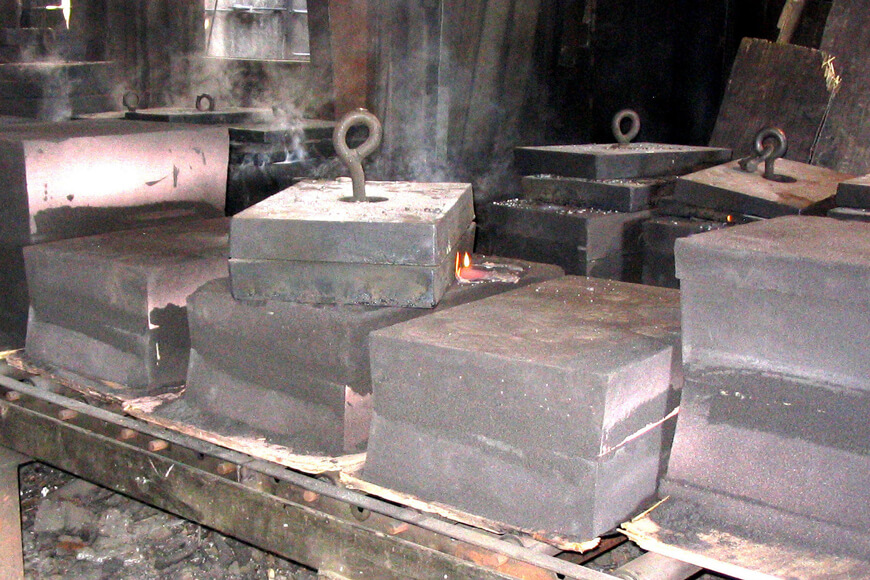
Soundness of metal components refers to the level of freedom from impurities and/or discontinuities, such as sand inclusions, slag inclusions, macroporosity, and shrinkage. It is impossible to produce a defect-free casting—only castings with defects of varying degrees. The acceptance or rejection of castings is determined by examination of parts (in accordance with internationally recognized standards such as ASTM) based on customers’ formal engineering requirements; acceptance and rejection criteria are defined by an agreement between the supplier foundry and the client before production. These criteria affect both the casting cost and the production processes used.
5. Testing and inspection
After production, all castings should be tested to ensure they meet the requirements of the specifications. Castings are also inspected for dimensional accuracy, surface finish condition, physical properties, internal soundness, and cracks. In many applications, testing is mandatory; additional tests could be required to ensure material specifications or other general requirements are met.
Testing and acceptance criteria must be clearly communicated and agreed upon prior to production. More rigorous terms of testing will increase the overall cost. To remain cost-efficient, the terms of testing and acceptance should be based on the precise requirements of each application.
There are two types of tests used to inspect castings: destructive testing and non-destructive testing.
Destructive testing
Destructive testing requires a separate test casting to be cast in addition to the required part. The test casting is then subject to destruction to visually determine the internal soundness (volume of inclusions, shrinkage, or gas present). Destructive testing tells only the condition of the piece tested, and does not ensure other non-tested pieces will be sound, but it is widely used in practice. If the test casting is acceptable, production can proceed under the assumption castings produced in the same manner will exhibit the same level of soundness.
Non-destructive testing
Non-destructive testing methods are employed on the casting itself to verify the internal and external soundness of without damaging the product. Methods include visual inspection, dimensional inspection, liquid dye penetrant inspection (LPI), magnetic particle inspection (MPI), ultrasonic testing (UT), and radiographic inspection (X-Ray).
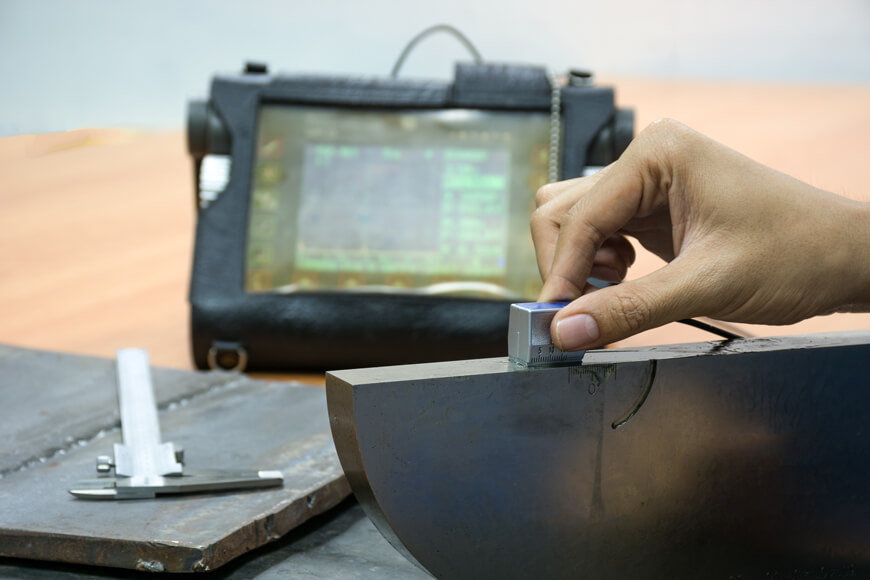
After inspections are completed, the inspected and accepted castings are sometimes used as is and shipped to clients, but more often they are subject to further processing. This may include specialized heat treatment, painting, rust preventive oils, other surface treatment (such as hot-dip galvanizing), and machining.
6. Weight
A significant cost component for any casting is material. The higher the weight of the casting, the higher the material cost will be for said casting. The more detailed weight data that can be provided to a foundry about the parts in question, the more accurate and reliable price calculations can be made.
Foundries are not only concerned about the net (resulting) weight of a casting; they are mostly concerned about the gross weight of the casting. The gross weight is measured by the weight of molten metal required to fill a mold comprised of the resulting casting, and all feed material (gates, risers, etc.) required to ensure a sound casting results from the casting process. A foundry’s casting price will be significantly affected by the casting yield (the efficiency of the casting process and the weight of the resulting casting divided by the weight of the feed metal poured into the mold) they achieve.
7. Patterns
Patterns are required to make molds, and patternmaking is the process and trade for producing patterns. Since patterns are the forms for the castings, the casting can be no better than the patterns from which it is made. Where close tolerances or smooth casting finishes are desired, it is particularly important that patterns be carefully designed, constructed, and finished.
Clear communication results in well-designed and economical castings.
Pattern equipment design and the resulting costs can constitute a major source of misunderstanding between the customer and supplier foundry. The need to construct new pattern equipment to suit a foundry’s production machinery even though existing/old equipment is available, a requirement for a full split core box in place of a half core box, a need for metal patterns to be produced instead of wooden patterns, and/or mounted pattern needs rather than loose pattern use are but a few of the many areas of discussion that affect the cost of the equipment. Invariably, the lowest casting cost and highest casting quality evolve from the more sophisticated pattern equipment, which generates the highest pattern cost.
8. Machining
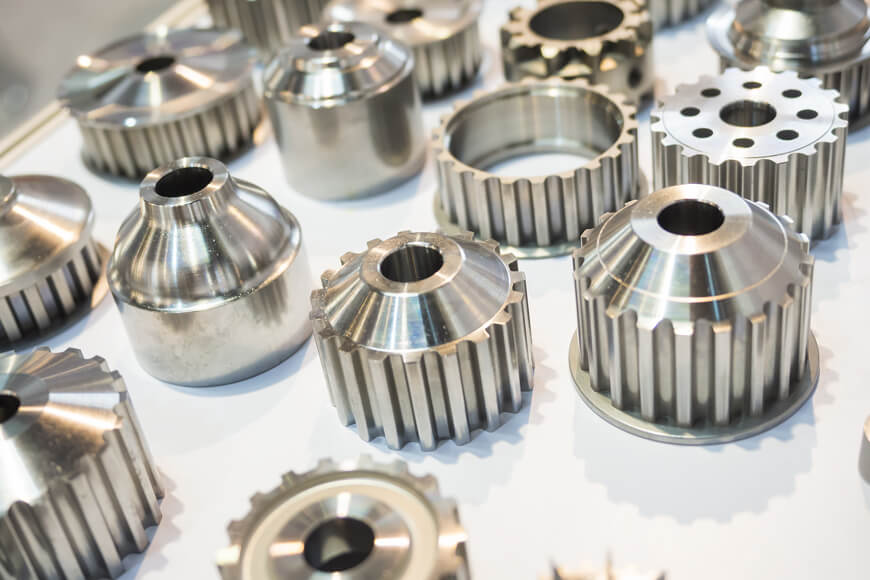
The process of mechanically removing extra unneeded material is called machining, and is a vital process when a high level of dimensional accuracy is needed. As such, a certain amount of additional material should be allotted for machining allowance when needed, especially when the part or product casted has a tight tolerance.
Tolerance refers to the dimensional accuracy achievable for a given production method. Mold expansion, solidification shrinkage, and thermal contraction all influence the tolerance of the finished part in the green sand casting process. Consequently, there are limits for tolerances in an as-cast part. Subsequent machining is commonly employed when a tighter tolerance is required.
Not all supplier foundries offer machining in house, but they are responsible for producing a cast product capable of being transformed by machining to meet its specific requirements for the part. To accomplish this goal, a close relationship must be maintained between the customer’s engineering and purchasing staff and the casting producer. With a cooperative approach, the following points must be considered:
- The casting process, along with its advantages and limitations,
- Machining stock allowance (amount of material left for finishing after rough cutting) to assure clean-up on all machined surfaces,
- Product design in relation to applying the clamping and fixture devices that secure the part during machining,
- Selection of material specification and heat treatment, and
- Quantity of parts to be produced.
Every casting design when first produced should be checked to determine whether all machining requirements are attainable. One method to accomplish this is to create a complete layout of the sample casting and check if adequate machining stock allowance exists on all surfaces requiring the machining procedure.
For simpler designs, a complete layout of the casting may not be necessary. But in other cases where the machining dimensions are more complicated, it is advisable the casting be checked thoroughly. This can be done through devising target points and marking out lines to indicate all machined surfaces, ensuring consistency throughout all stages of production.
9. Production and delivery schedules
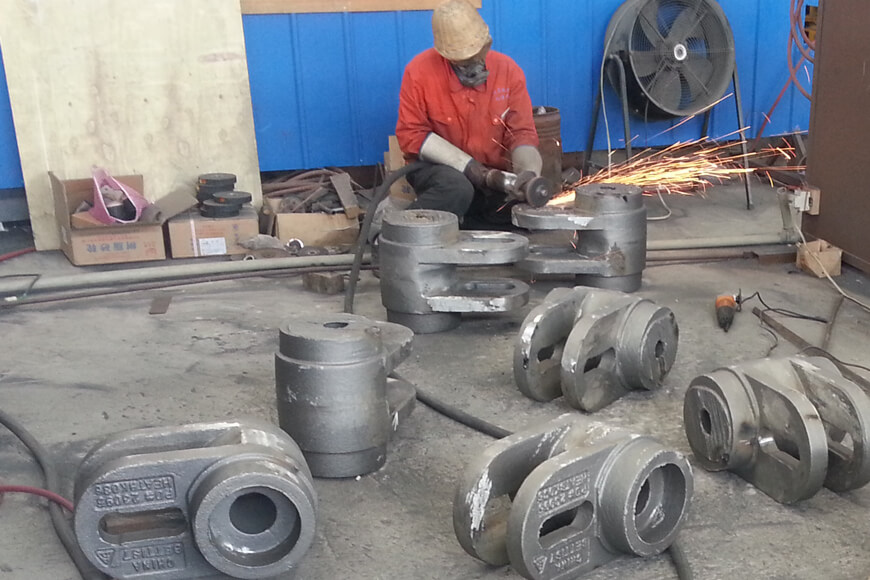
Communication of delivery and demand requirements is essential to finding the right shop to meet both short-term and long-term needs.
In addition to all other considerations above, it is imperative for both customers and suppliers to be aware of production schedule needs. For example, if a customer requires delivery of production parts in six weeks, it would significantly limit the number of foundries willing or capable to even quote on such work—let alone reliably run production within such a tight timeline. Conversely, if a client is looking for interested foundries to review their detailed, long-term needs (for example, 600 pieces per year of part “x,” produced in lots of 150 pieces per order, with initial production runs needed no earlier than six months from now), then they will find many more parties interested and capable of addressing their needs.
A request for quotes should be made well before the required delivery date. Due to the complexity of the metal casting process, project lead times can easily run up to 24 weeks leading up to full production and delivery once castings are ordered. This time can include commercial considerations (financial administration), pattern and tooling construction, sampling, inspections, pattern changes, (full) production set up, production, post-production processes, and more.
Ordering castings
A cooperative effort is essential to the successful outsourcing of a metal casting project—the supplier foundry should be involved from the early stages of design through to manufacturing and product delivery.
Once the supplier foundry reviews a quote request, they will work alongside clients to evaluate all costs and determine product goals. Good planning pays off for both the foundry and the client, as foundry experts evaluate the project before production and will recommend the best materials and methods for achieving the most economical solution.
By providing foundries with the most accurate and detailed information possible about their casting needs, customers can expect to receive plenty of feedback, questions, and—once details are confirmed—pricing from interested parties. Proper preparation streamlines the ordering process, saving time and reducing the probability of product errors.



